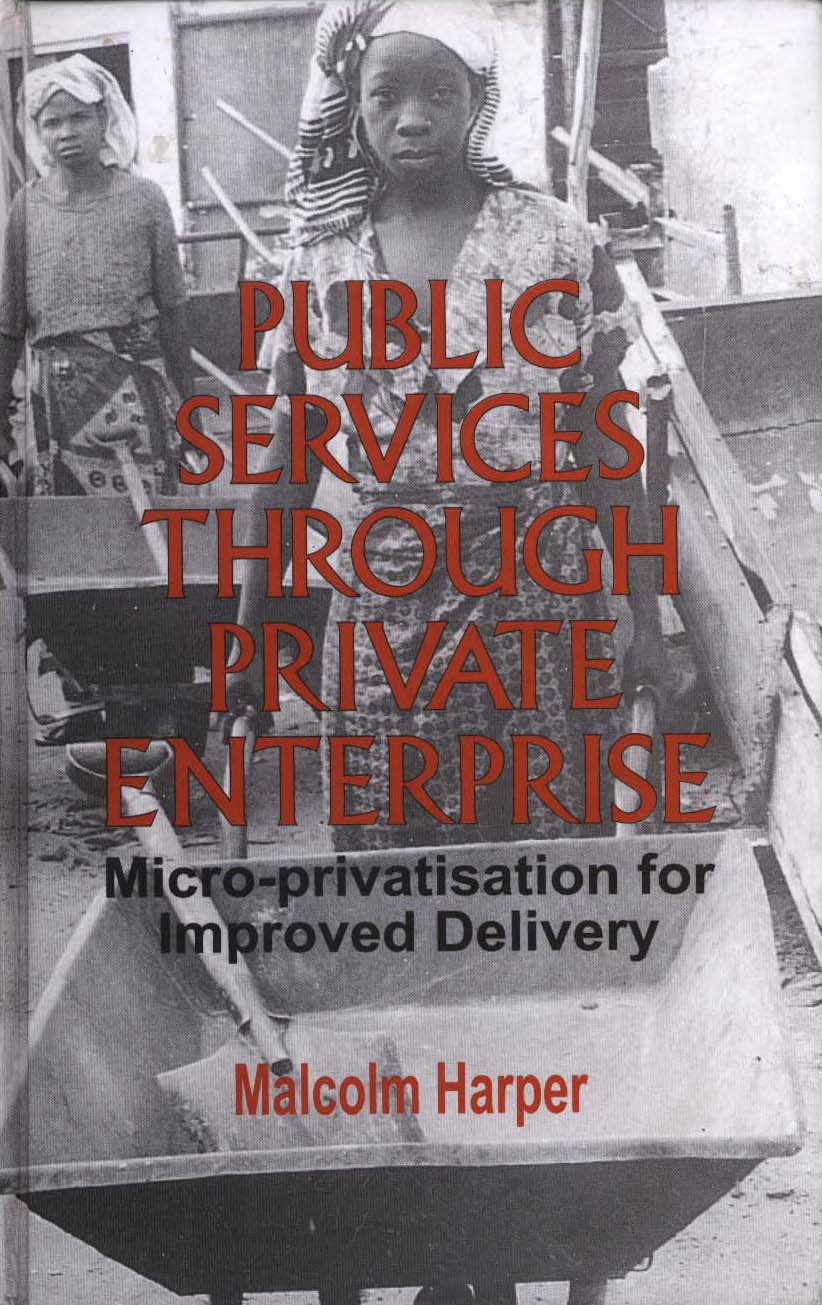|
Public
Services Through Private Enterprise
|
Title : Public
Services Through Private Enterprise
Author : Malcolm Harper
Published by : SAGE
Publications India Private Limited
M-32 Market, Greater Kailash - I,
New Delhi - 110 048
Publication Date :
March 2000
Pages : 370
Price : Rs.
450/- (Cloth)
|
 |
Cigarettes
and soft drinks are available in just about every village, everywhere. Clean
water, primary education, or health services are not. What has gone wrong? Why
is it that so many non-essential or even harmful products are so effectively
distributed to every community that can afford them, and to many that cannot,
while the things that people really need are so often difficult to get, or are
not available at all?
Well, if you want to get the answers to all these questions and join the
developmental debate then you must get hold of a copy of Malcolm Harper’s
"Public Services through Private Enterprise: Micro-privatisation for
Improved Delivery. This latest book coming off the shelf of Vistaar
Publications, a division of Sage Publications, suggests a strategy to overcome
what appears to be an otherwise hopeless situation – ‘micro-privatisation’.
Micro-privatization seems to be a pragmatic solution for providing efficient
delivery of public services, which the governments of most developing countries
have failed to deliver. Governments can hand over this responsibility to small
private or community enterprises. This will not only reduce the cost of the
delivery but also improve its quality, efficiency and outreach.
Malcolm Harper has presented 24 real life case studies to prove the economic
viability and pragmatic feasibility of micro-privatisation. He has picked up
actual cases from the Developing World (Asia , Africa and Latin America) as well
as examples from the Developing World ( like USA and Europe) to demonstrate the
efficacy of the strategy.
This informative document covers a broad spectrum of successful
micro-privatization ventures in delivering services including urban services,
utilities, agriultural serices, health and hygiene, transport, welfare and
education. The analysis accompanying the case studies identifies the problems
encountered and the solutions adopted.
For example, the book demonstrates the success of micro-private enterprises in
delivering health and hygiene services -like the success story of TB treatment
in Hyderabad, india.
TB, or Tuberculosis,is responsible for more deaths worldwide than any other
infectious disease. Each year, eight million people develop TB and three million
people die of the disesae. And, more than a quarter of TB patients live in
India. On top of it , the National TB control Programme(NTP) of the the
government of India does not reach most people. Secondly, the private treatment
is very costly. So, WHO now advocates the Directly Observed Treatment System or
DOTS. The patient has to attend a hospital or other health facility to take the
medicine under observation by a trained worker.The difficulty with this system
is that large numbers of convenient locations must be easily available for the
benefit of TB patients and there must be a system to contact the patient
immediately if he/she is not able to turn up.
To bridge this gap between the public and private medical services, trust
hospitals were tapped as they occupy a middle ground between the state and
private sector. Their entire network of private doctors and their nursing homes
is now used and DOTS treatment centres have spread all over Hyderabad. This
partnership involves the private doctors, nursing homes, the trust hospital and
the government. The doctors have excellent access to the community, and are able
to refer suspected TB ptients to the hospital. The trust hospital provides high
quality diagnostic tests, and organises the whole system, the nursing homes
provide the DOTS centres, and the government provides a regular supply of free
medicines. Hence, the new approach is known as PPM DOTS, or private Public Mix
DOTS.This system is really effective as it not only saves the patient’s money,
but also prevents the spread of TB. It is really a win-win situation.
All in all, this book is a must for all the development agencies, whether
grassroots NGOs or international development agencies. It will also be of
particular interest to those engaged in the fields of rural development, urban
management, public administration, community development and enterprise
management.

